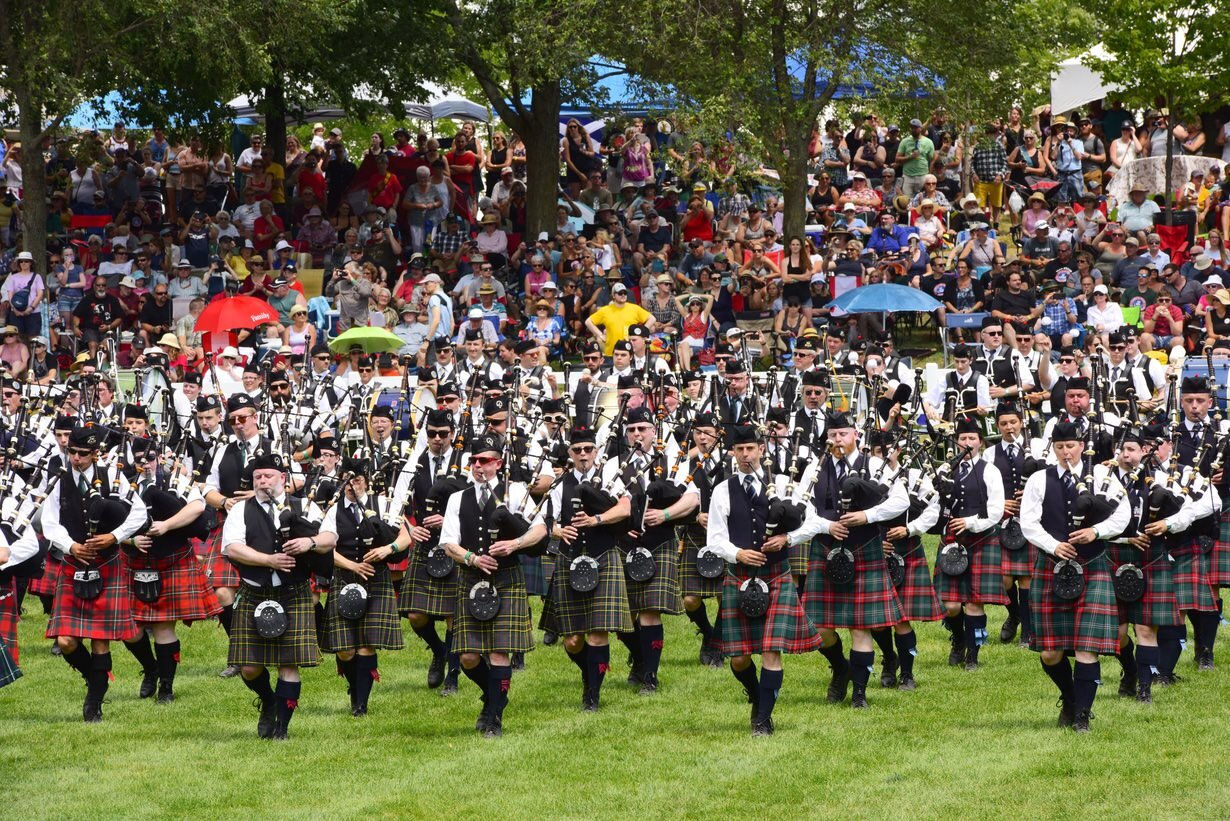TRADITION: trivia - Why Bagpipes lead parades around the world today.

By the late eighteenth century, after the failed final Jacobite Rebellion of 1745, the British crown and government passed several repressive laws banning all Highland culture as a means of destroying the Highland clan system. Lasting from 1746-1782, the only way to legally wear a tartan or play a bagpipe was to pledge allegiance to the crown and join the British military.
During this time period the British military started to incorporate bagpipes into its Scottish regiments basically in an attempt to ‘focus’ the fierce Highlander into fighting with the crown, rather than against it. With more than 50,000 men recruited from the Highlands and Islands during the eighteenth and nineteenth centuries, Highland soldiers and musicians would have significant cultural effects on the British Empire and its ambitions of colonizing the world.
In the early 1800’s, with the ending of the suppressive laws and with the beginnings of the modern day Highland games in Scotland, which would ultimately lead to the development of competition systems such as the he Royal Scottish Pipe Band Association by the end of the century. The playing of the bagpipes began to evolve from an instrument hidden and learned through oral tradition, to an instrument available for everyone and could be learned from recently printed books.
After Queen Victoria’s love for all things Scottish and her visit to the Braemar Games in 1848, causing a major shift in British society’s perceptions of the Scottish Highlander. Pipe Bands started to appear within the British Army. With The 42nd, 71st, 72nd, 73rd, 74th, 78th, 79th, 92nd and 93rd being the first regiments to be allowed and to pay, five pipers and a Pipe Major. The oldest military pipe bands known in Scotland are The Black Watch and the Scots Guards.
Non-military pipe bands or Civilian pipe bands began to appear in the 1880’saround the same time police and fire brigades started to appear in urban centers. Breadalbane Pipe Band is possibly the oldest known civilian pipe band, with the Strathclyde Pipe Band (Glasgow) and the Edinburgh City Police Pipe Band being the first police bands known to be formed.
The first military and civilian pipe bands in North America were formed in Canada. With the 48th Highlanders from Ottawa, in 1892 and the Argyll and Sutherland Highlanders from Hamilton, in 1903. The first non military being, The Sons of Scotland from Ottawa, in 1896 and the Vancouver Police Pipe Band, in 1914.
The Bagpipes of the highlands, now incorporated with the drums of the British army, in which both had led thousands of troops against each other for thousands of years, would now lead the charge together and play to inspire soldiers right through to the Great War.
for more information about the documentary TRADITION: A STORY FROM GLENGARRY or how to help/donate click the link below.
sign up to our newsletter on our website or follow us on facebook or instagram.

Comments